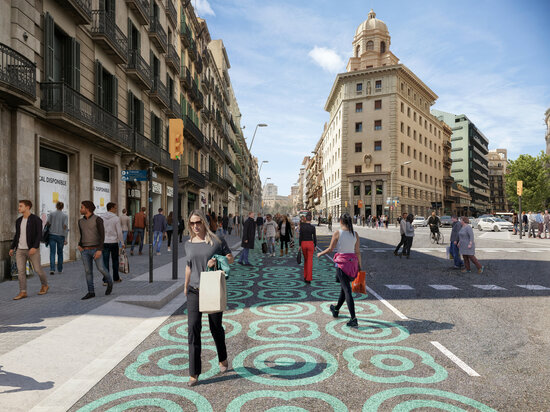Works begin to make two of Barcelona’s busiest streets more pedestrianised
Changes to city’s Pelai street and Meridiana avenue commence this spring to reduce traffic and increase mobility

New works on Barcelona's major roads Pelai street and Meridiana avenue have now become part of the city council's effort to reduce traffic and make Barcelona more pedestrian friendly.
Pelai is located right in the city centre, leading to la Rambla and the main square Plaça Catalunya, and Meridiana avenue is one of Barcelona’s main roads, being the city’s northern exit route.
The works on Pelai, begun on Sunday and hoping to be finished by the end of April, will double pedestrian space by removing two traffic lanes. The new area will be painted with pictograms, and increase the pedestrianised area from 5 metres to 9 metres. In total 1,500m2 of new space will now be accessible by foot.
The speed limit on Pelai street will also be reduced from 50km/h to 30km/h as part of the same initiative.
The works on Meridiana are due to commence on April 6 and will involve the elimination of an exit and an entrance lane and the addition of a central bicycle lane. These works are significant and €8.33m has been budgeted for the reconstruction of 27,500m2 of space.
In the case of Carrer de Pelai, the first stage of works is expected to cost €37,000 and the second stage, starting in September 2021 and being completed at the end of the year, €90,000.
City’s return to mobility
These new works come as part of a series of initiatives launched by Barcelona City Council to reduce cars in the city centre. For example, the city council launched an initial project in April 2020 to encourage travel by foot, bike and public transport as part of a plan to return to mobility. It was allocated a budget of €4.4 million to be put towards the pedestrianisation of some of the cities busiest streets such as Consell de Cent, Carrer de Girona and Carrer Rocafort.
The plan included introducing 21 kilometers of bike lanes on 10 new lanes in the city, added bus lanes and more frequent services, so as not to congest the public transport.
Over the last year, the city has continued to pursue similar works. For example, to reduce traffic and pollution in the city centre, from February 8 of this year, cars were prohibited from crossing the Gran Via and Avinguda Diagonal, being forced now to take a right when they join. This rule does not apply to public transport or bikes.
Air pollution
During the pandemic, air pollution in Barcelona significantly improved, falling 62% during lockdown to the lowest levels seen in over a decade, according to a study by environmental group Ecologistes en Acció (Ecologists in Action).
However, Pollution Barcelona, part of the ENT Foundation, says the data collected during 2020 has enabled researchers to reach the following conclusion: traffic levels on working days must fall by 12% compared to pre-pandemic norms if pollution levels are to remain within EU legal limits.
Barcelona City Council are making efforts now to maintain the lower levels of pollution seen during the pandemic.
Regarding the commencing works on Carrer de Pelai, Janet Sanz the Second Deputy Mayor of Barcelona, said: "We don't want to wait, because making a definitive transformation requires planning, work, and we won't - let's start now.”